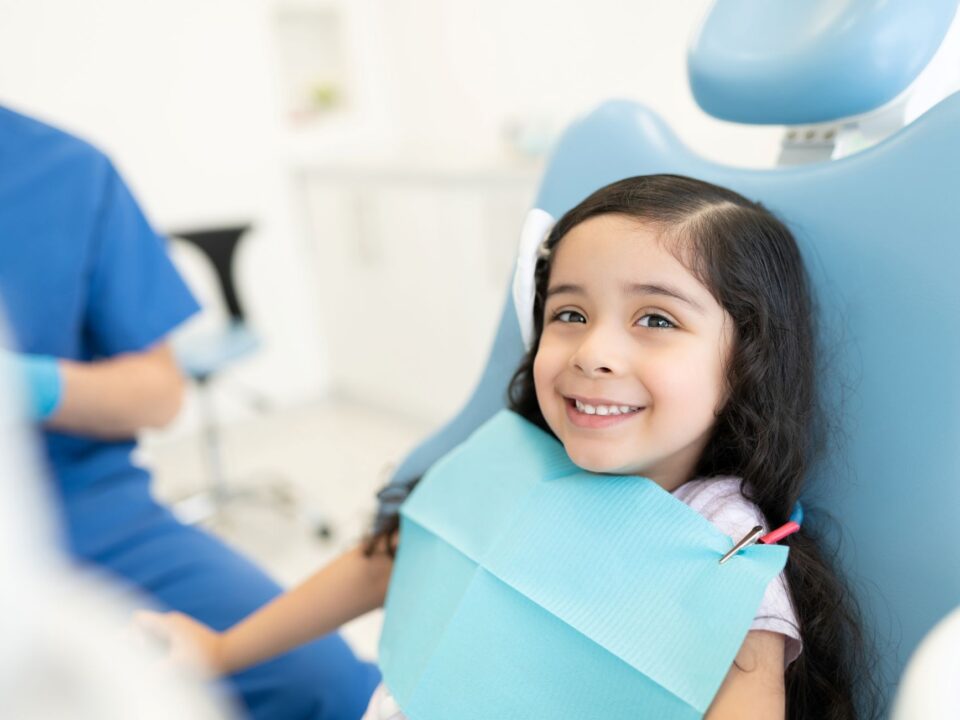Protecting Your Child’s Smile: Baby Bottle Tooth Decay Awareness
Every parent wants their child to grow up healthy and happy, with a bright smile that lights up their face. But one of the most common – and preventable – threats to that smile is something many parents don’t even know exists: baby bottle tooth decay. Also known as early childhood caries, this dental condition can start earlier than most people realize, even before a child’s first birthday. The good news? With a little awareness and a few daily habits, it’s entirely preventable.
In this post, we’ll explore what baby bottle tooth decay is, what causes it, how to prevent it, and how to spot it early before it becomes a bigger problem.
What Is Baby Bottle Tooth Decay?
Baby bottle tooth decay refers to tooth decay that occurs in infants and toddlers, typically affecting the upper front teeth but sometimes spreading to others. It happens when a baby’s teeth are frequently exposed to sugary liquids, such as milk, formula, fruit juice, or sweetened beverages.
The bacteria naturally present in the mouth feed on these sugars, producing acids that attack the enamel, the protective outer layer of teeth. Over time, this acid erosion weakens the enamel, leading to cavities. Because baby teeth have thinner enamel than adult teeth, they’re especially vulnerable to damage.
This decay can develop gradually and often starts unnoticed. A baby’s smile might look perfectly fine at first, but beneath the surface, harmful bacteria may already be at work.
Why Baby Teeth Matter More Than You Think
It’s easy to assume that baby teeth aren’t a big deal – they’re temporary, after all. But healthy baby teeth play an essential role in your child’s overall development. They:
- Guide permanent teeth into their proper positions.
- Support speech development by helping form sounds and words.
- Allow proper chewing and nutrition, ensuring your child gets the nutrients they need.
- Contribute to self-esteem, as a healthy smile helps children feel confident when interacting with others.
When baby teeth are lost too early due to decay, it can cause spacing issues, crooked adult teeth, and even difficulties with eating or speaking. That’s why preventing early decay is about much more than just saving baby teeth: it’s about protecting your child’s long-term health and confidence.
Common Causes of Baby Bottle Tooth Decay
Several everyday habits can unknowingly contribute to tooth decay in infants and toddlers:
- Prolonged Bottle Feeding: Allowing your baby to fall asleep with a bottle of milk, formula, or juice can leave sugary liquids pooling around their teeth for hours.
- Frequent Snacking or Sipping: Constant exposure to sugary drinks feeds bacteria and creates an acidic environment that wears away enamel.
- Lack of Oral Hygiene: Parents may assume they don’t need to clean their baby’s mouth until teeth appear, but bacteria can accumulate on gums long before that.
- Transmission of Bacteria: Sharing spoons or cleaning pacifiers with your mouth can transfer cavity-causing bacteria from parent to child.
- Dietary Choices: Some baby foods, snacks, and even medications contain hidden sugars that can contribute to decay.
Understanding these causes is the first step toward preventing them.
How to Prevent Baby Bottle Tooth Decay
Preventing baby bottle tooth decay starts early – ideally before your baby even has their first tooth. By building healthy habits from day one, you set your child up for a lifetime of good oral health.
- Begin Oral Care Early: Before teeth erupt, gently wipe your baby’s gums after each feeding using a soft, clean, damp cloth or gauze pad. This simple step removes bacteria and leftover milk, keeping your baby’s mouth clean. Once the first tooth appears, switch to a small, soft-bristled baby toothbrush and brush gently twice a day using a smear of fluoride toothpaste (about the size of a grain of rice). As more teeth appear, continue brushing regularly and teach your child that this is a normal part of their daily routine.
- Choose the Right Drinks: Water is always the best option for hydration between meals. If you do offer juice, limit it to no more than 4 ounces a day for toddlers, and always serve it in a cup, not a bottle. Breast milk and formula are nutritious and necessary, but try to avoid letting your baby fall asleep while feeding. Prolonged exposure, especially overnight, increases the risk of decay.
- Don’t Let Baby Sleep with a Bottle: This is one of the most common causes of tooth decay in infants. When a child falls asleep with a bottle, milk or juice pools around their teeth, allowing sugars to feed bacteria for hours. If your baby needs comfort at bedtime, offer a pacifier or a bottle filled with plain water instead. If your child is used to sleeping with a bottle, weaning might take time. Gradually replace sugary drinks with water and offer comfort in other ways – like rocking, singing, or cuddling – to break the habit gently.
- Transition to a Cup Early: Around six months of age, start introducing a sippy cup. This not only helps your baby learn independent drinking skills but also prevents the constant exposure of teeth to sugary liquids that often occurs with bottle feeding. By around 12 to 18 months, most children should be using a cup exclusively.
- Watch Their Diet: As your baby grows, offer a variety of healthy foods to strengthen their teeth and gums. Foods rich in calcium and phosphorus, such as yogurt, cheese, and leafy greens, help remineralize enamel and keep it strong. If your child does have a sweet treat, encourage them to rinse with water afterward and brush as soon as possible.
- Establish Regular Dental Visits: We recommend that children see a dentist by their first birthday or within six months of their first tooth erupting. Early visits help your dentist monitor your child’s dental development, provide fluoride treatments if needed, and offer advice on brushing, diet, and habits like thumb sucking or pacifier use. These early appointments also help your child feel comfortable with dental visits, setting a positive tone for future care.
Recognizing the Early Signs of Baby Bottle Tooth Decay
Knowing what to look for can help you catch decay before it becomes serious. Early detection allows for simple, effective treatments that prevent further damage.
Here are some common signs:
- White spots or lines on the teeth: These are often the earliest signs of enamel weakening. They may appear along the gumline and can easily go unnoticed unless you look closely.
- Brown or black spots: As decay progresses, discoloration becomes more noticeable and may indicate cavities forming.
- Tooth sensitivity: Your child may flinch or cry when eating or drinking something hot, cold, or sweet.
- Pain or swelling: Advanced decay can cause toothaches or even gum infections, leading to visible swelling.
- Difficulty eating or chewing: If your child avoids certain foods or seems uncomfortable while eating, it could be due to dental pain.
If you notice any of these symptoms, schedule a dental visit right away. Early intervention can stop the decay and prevent the need for more extensive treatments later on.
What Happens If Baby Bottle Tooth Decay Is Left Untreated
Untreated tooth decay can lead to a range of complications, including:
- Pain and infection: Cavities can progress into painful abscesses, which may require antibiotics or even tooth extraction.
- Speech problems: Missing teeth can affect the way a child forms sounds.
- Difficulty eating: Pain and sensitivity can make eating unpleasant, leading to nutritional deficiencies.
- Future dental issues: Premature loss of baby teeth can cause alignment problems when adult teeth come in, sometimes requiring orthodontic treatment later.
- Emotional impact: Children with visible tooth decay may feel self-conscious about their appearance.
By addressing tooth decay early – or better yet, preventing it – you can protect your child from these challenges and ensure their smile remains bright and healthy.
Every Smile Begins with Healthy Baby Teeth
Baby bottle tooth decay may sound intimidating, but it’s one of the most preventable childhood dental issues. With attentive care, smart feeding habits, and regular dental visits, you can protect your child’s oral health from the very start.
If you ever have concerns about your child’s teeth or notice signs of decay, don’t hesitate to reach out to your family dentist. Early action is the best defense against decay – and your child’s bright, healthy smile is absolutely worth it.




